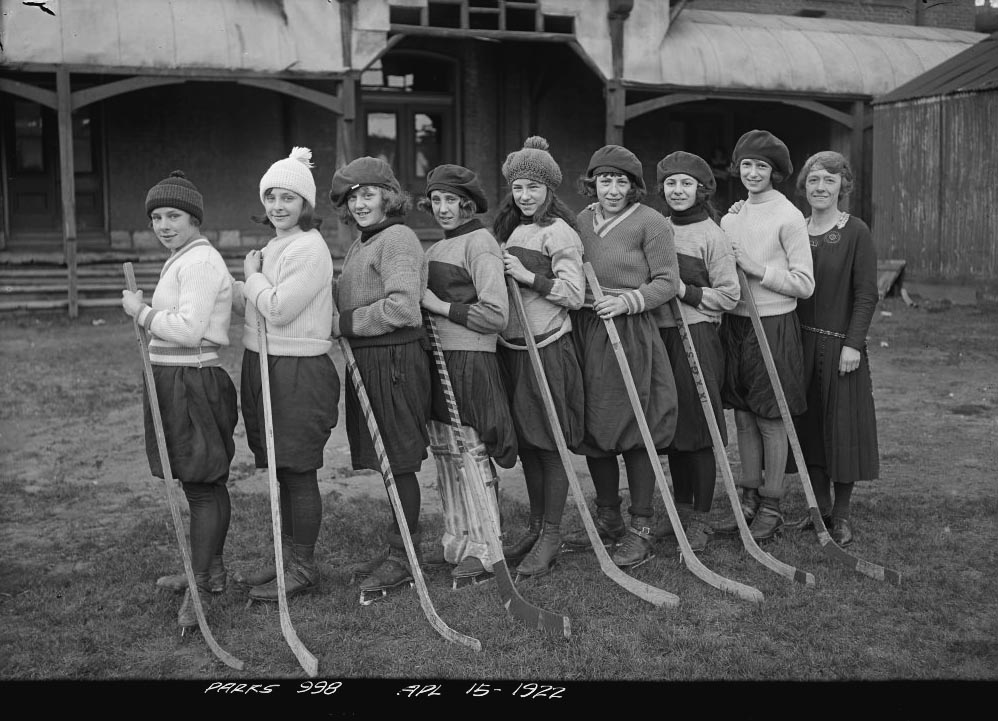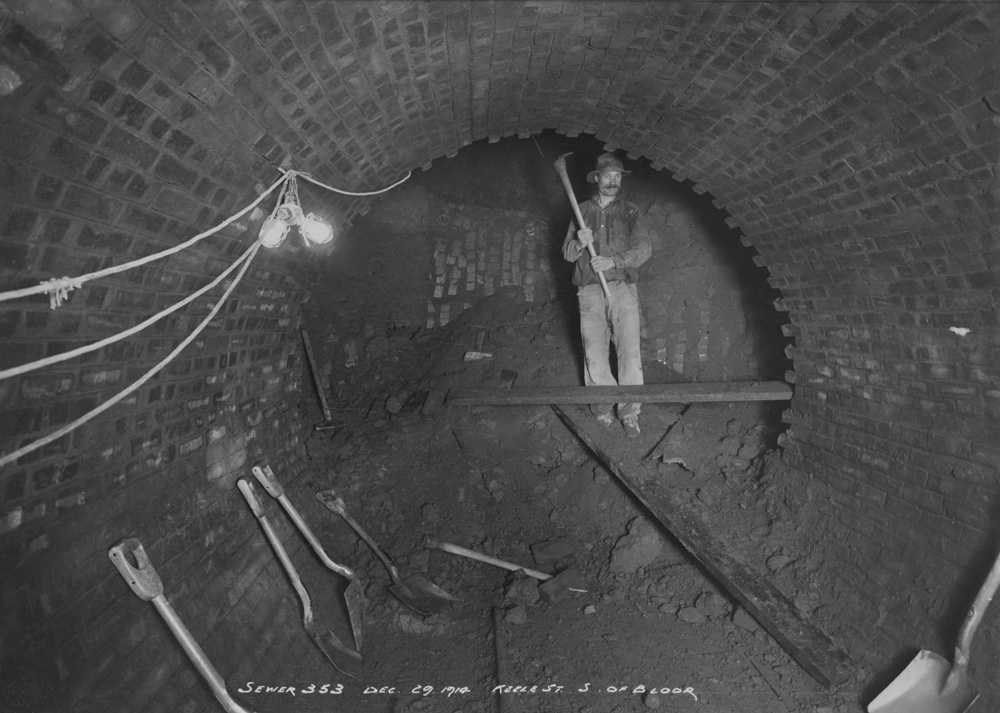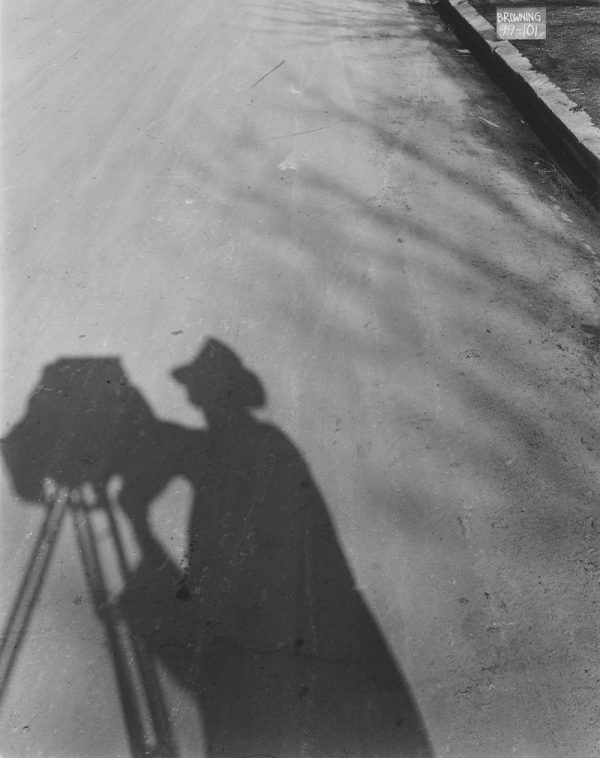Anyone who delves into the visual records related to Toronto’s twentieth-century social history is likely to come across photographs taken between 1910 and 1940 by the city’s first Official Photographer, Arthur Goss. His surviving glass plate negatives and original prints are now housed at the City of Toronto Archives.
Over three decades, Goss employed a felicitous combination of artistry, empathy and pragmatism to produce what is arguably the most comprehensive and engaging photographic record of any era in our city’s history. We see Toronto’s slow evolution through that period of prosperity and depression largely through his eyes.

League Champions, Moss Park Recreation Centre
City of Toronto Archives, f200-s0372-ss52-it998
Goss had been recognized for his personal work as a pictorialist photographer before being promoted to the position of Official Photographer for the City. While he left no artistic statement regarding what we now call documentary photography, there is nevertheless ample evidence in the photos he took that he enjoyed his job, despite its artistic constraints.
In 1998, I was the guest curator of the exhibition Arthur Goss: Selected Photos at the Art Gallery of Ontario. Entirely new technologies have since emerged for taking, storing and transmitting photographs, as have options for reproducing photos on paper. These development have significantly affected the way archival photos are made available to researchers and to the general public.
Because of these developments, I have decided not to revisit the curatorial essay I wrote for the 1998 exhibition. Instead, in this series of articles for Spacing I will be discussing aspects of Goss’s career and legacy in ways that I hope will be of value to a general audience. For researchers who would like more biographical information, you can consult the complete text of my 1998 essay.
How Arthur Goss Worked
Photography is a technological art form. To achieve his or her artistic ends, the photographer must settle on an appropriate combination of equipment and materials, hardware and software. Like most professionals of his era, Goss acquired the best camera equipment available at the beginning of his career, and stuck with it as it gradually became outmoded.
For the majority of his work, Goss relied on a view camera made of wood and brass, mounted on a sturdy tripod with wooden legs. A view camera allows precise framing and focusing of the image projected upside down on the ground glass screen until the moment film holder is inserted. For technical reasons, view camera exposures tend to be long, resulting in blurring of movement within the frame.
For indoor views where available light was insufficient, Goss deployed magnesium flash powder. Despite posing a fire hazard and emitting noxious fumes, the barely controlled explosion of the powder produced relatively soft, even light.

Keele Street South of Bloor
City of Toronto Archives, s0372-ss59-it353
For outdoor photos where setting up a tripod was impractical, or where action needed to be frozen, for example, on a messy construction site or sports field, Goss needed a different kind of camera. When he was appointed in 1911, the only practical choice for photographing moving subjects was the Graflex.
The Graflex was a revolutionary single lens reflex camera that allowed the photographer to alter the composition and focus until the moment of exposure. Despite its enormous bulk, a top shutter speed of 1/1,000 of a second meant that it could be used for spontaneous, hand-held views.*

Panorama (Detail from a three image panorama)
City of Toronto Archives, f1231-it0866
Goss was required to photograph outdoors in all seasons and in far-flung locations, so he needed a personal means of transportation and assistance in the field. Several early photos show what must have been his first car, a Model T Ford, licence number 139. A young assistant may be seen posing nonchalantly in some early views. In others, slanting sunlight might project two shadows, representing photographer and his assistant, into the foreground.
During his career, Goss created 83 photo series, which ranged in size from less than a dozen to more than three thousand images each. The majority of his series names refer to specific projects of short duration. One example, “Crawford St. Bridge, 1914-1918,” documents the construction of a concrete arch bridge near Trinity Bellwoods Park, which was later buried in an embankment.
Other series were named for the city departments that had commissioned the photos. For example, “Architects,” which he maintained from 1912 until his death in 1940, contains photos of a wide range of buildings designed by the City Architect’s office, such as field houses for city parks, trash incinerators and horse stables.

Water Works Building
City of Toronto Archives, s0372-ss0001-it1217
The consistency of Goss’s point of view is reinforced by the standardized image format he maintained over his whole career. The approximately 30,000 negatives he exposed in both cameras were 5 X 7 inch glass plates, most of which survived improper storage in the attic of Old City Hall before being rescued by the first City Archivist in 1960.
Today, digital cameras automatically record metadata, including the time and date of exposure, as part of the image file. After experimenting with alternative labelling methods, Goss settled on writing the series name, negative number, date, and image title in India ink across the bottom edge of each negative. This information appears in white on the contact prints made in the lab of the Photography and Blueprinting Section at the Old City Hall.
The richness of Goss’s work results primarily from the way he applied his artistic sense to a vast range of subject matter, but also from the way thousands of incidental details enliven even his photos of the most banal subjects.

New Horse
City of Toronto Archives, s0372-ss0072-it842
The Toronto he shows us is often unfamiliar, perhaps an object of nostalgia, harbouring mysteries beyond the frame, but always open to our imagination.
- See the subsequent articles in this series:
* The Graflex was a popular camera with artists between its introduction in 1889 and the 1950s. As a member of the Toronto Camera Club, Goss would have seen Graflex photos taken by Alfred Stieglitz. Among the other American artists who used this camera were Lewis Hine, Margaret Bourke-White, and Dorothea Lange.




